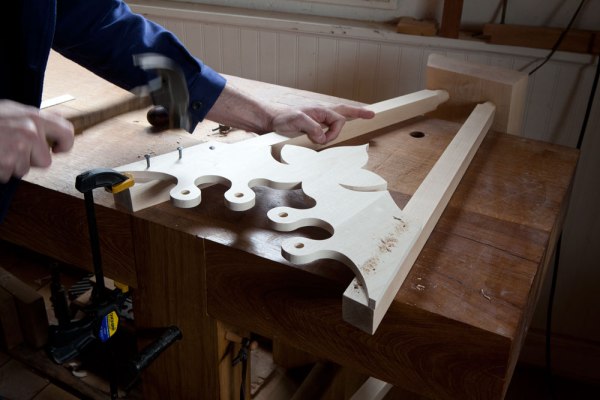
“You’ve got to learn your instrument. Then, you practice, practice, practice. And then, when you finally get up there on the bandstand, forget all that and just wail.”
— Charlie Parker
“We believed punk rock existed through people like ATV and Mark Perry. He said, ‘Here’s a chord. Here’s another chord. Form a group.’ And we believed in the things that were being said. So, it became true.”
— Billy Childish, guitarist and vocalist for Thee Headcoats
During a recent trip to Seattle, my family and I spent a day at the Experience Music Project to see the exhibit on the band Nirvana and to take in the permanent and fantastic exhibit on the history of the electric guitar.
As my daughter Katy and I made our way through the Nirvana exhibit I was blown away by the T-shirts, posters, album covers and instruments that had been made by the musicians themselves in the Pacific Northwest’s punk scene. It reinforced something that I have long thought but have never expressed: Making furniture and making music is similar.
You can be establishment. You can be punk. Or you can be anywhere in between.
Me, I’m a more of a punk furniture maker. I have little interest in high-style pieces that were made for the ultra-rich – things that are elaborate and require immense technical skill. Yeah, I respect the hands and the training needed to carve a Newport shell or create a hunting scene in marquetry. But it has no connection to the way I live or my taste in objects.
I like three three chords. I like simple lines. I like music that was made without any hope of selling it to the masses. I like furniture that was made by unknown amateurs who made what they could with materials at hand and sometimes struck gold. I like music that was written, recorded, printed and distributed by the players. I like furniture that was designed, built, finished and used by its makers.

I like music that cannot be pegged to particular moment in pop history. I like furniture that could have been made in the 17th century or the 21st.
Where is this sort of furniture? It’s everywhere (outside of museums), and it’s invisible to most furniture historians.
Where do you find the plans for this furniture? You don’t. There really aren’t plans. This stuff is so basic and so animalistic that plans aren’t needed. But there are three chords. Three joints. A few basic tools. A few progressions.
After that it’s up to you.
— Christopher Schwarz